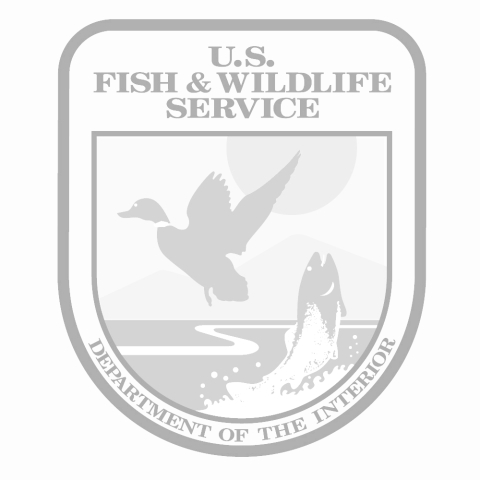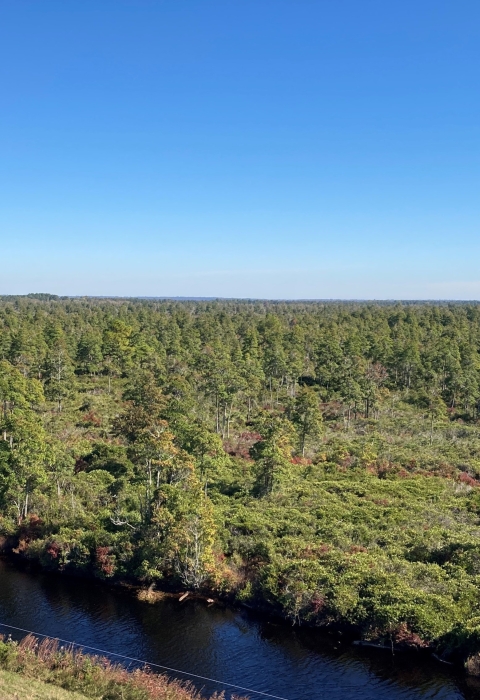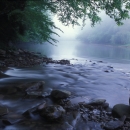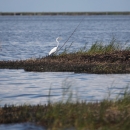News
The natural resources Trustees responsible for addressing environmental injuries and human use losses caused by the Enbridge 2010 Kalamazoo River Oil Spill are proposing an amendment to a previously approved Restoration Plan from 2015. The Federal, State and Tribal Trustees in this matter include the State of Michigan, Department of the Interior, the Match-E-Be-Nash-She-Wish Band of the Pottawatomi Indians and the Nottawaseppi Huron Band of the Potawatomi Tribe, as well as NOAA. This Draft Amendment replaces a previously selected recreational use and public access project with a suitable and comparable restoration alternative to compensate the public for injured natural resources and services near the Enbridge release site.
The trustees are soliciting public comments on the Draft Amendment for 30 days through the close of business on February 6, 2023.
Angler’s Bend, one of the recreational use projects was selected as part of the preferred alternative in the 2015 plan. This project is no longer a viable project due to safety concerns resulting from recent construction and bridge refurbishment activities at the existing site. The Trustees are proposing to replace the Angler's Bend project with the North Branch Park project, a comparable recreational use and public access project just downstream of the former Angler's Bend location. Proposed components of the North Branch Park project include regrading the site, providing a concrete boat launch in place of the existing earthen one, providing on-site gravel parking and access areas, creating a separate canoe and kayak launch area, planting trees, adding picnic tables, and relocating the entrance from Custer Drive to provide safer ingress and egress from the site.
The proposed North Branch Park project remains consistent with the Trustees’ original restoration goals and objectives, and it has been determined that the recreational use benefits would be equivalent to those that would have been provided by the Angler’s Bend project.
Public participation and review are an integral part of the restoration planning process and are specifically required in the NRDAR and NEPA regulations. This Draft Amendment to the Final 2015 DARP/EA is available for public review and comment for a period of 30 days, from the date of publication. Written comments or requests for additional information on the Draft Amendment should be sent via e-mail to kzoorivernrda@fws.gov with “Enbridge NRDA Comment” in the subject line or via U.S. mail to:
Lisa L. Williams, U.S. Fish and Wildlife Service 2651 Coolidge Road, Suite 101 East Lansing, MI 48823
The Trustees will consider and respond to public comments in preparing and issuing a Final Amendment.
History
A rupture in a 30-inch oil pipeline near Marshall, Michigan, released over 840,000 gallons of crude oil into Talmadge Creek, which flows into the Kalamazoo River. Enbridge Energy reported the spill in July 2010. Heavy rains caused Talmadge Creek to overtop its banks and carry oil 38 miles downstream to the Kalamazoo River, into adjacent floodplains.
Oil from the rupture, along with spill response activities, harmed fish, wildlife and other natural areas in and around Talmadge Creek and the Kalamazoo River. These public natural resources are under the jurisdiction of the United States, the State of Michigan, the Nottawaseppi Huron Band of the Potawatomi Tribe, and the Match-E-Be-Nash-She-Wish Band of the Pottawatomi Tribe. Government and tribal agencies used the Natural Resource and Damage Assessment process to document the amount of harm caused by the spill and will seek restitution from from the responsible party (Enbridge Energy) to restore natural resources harmed by the spill.
Trustees
For the Michigan Enbridge Oil Spill, the trustees include the U.S. Department of Interior (represented by the U.S. Fish and Wildlife Service and U.S. Bureau of Indian Affairs), National Oceanic and Atmospheric Administration, Michigan Department of Natural Resources, Michigan Department of Environmental Quality, Michigan Attorney General, Nottawaseppi Huron Band of the Potawatomi, and the Match-E-Be-Nash-She-Wish Band of Potawatomi.
Damage Assessment
Within days of the spill, trustees began collecting data to understand the spill’s impact on natural resources and recreational use in and near the creek and river. Since the spill, the Trustees have gathered information on water, fish, mussels, other invertebrates such as insects and crustaceans, vegetation, recovery and rehabilitation of oiled wildlife, recreational closures, as well as data collected by response agencies. Based on information collected and reviewed by trustees during these efforts, and in accordance with state regulations and the Oil Pollution Act and NRDA, the trustees decided to conduct restoration planning to assess damages and restore those resources.
In the course of restoration planning, the trustees collected and reviewed data to identify and quantify different types of impacts from the spill. The trustees evaluated progress in the spill cleanup, work that Enbridge was doing to restore the impacted areas and provide for public use, and future work that they will be required to do by the State of Michigan. The trustees also identified additional restoration projects that benefit the same or similar resources injured by the spill and could be used to compensate the public for losses to natural resources.
Settlement
The Trustees reached a settlement for natural resource damages (NRD) in conjunction with a settlement between the State of Michigan and Enbridge that addresses cleanup along with provisions for certain restoration projects and compensation. The NRD settlement provides funding to the Trustees to conduct natural resource restoration, reimburses agencies for assessment and restoration costs, and incorporates additional requirements for Enbridge from the settlement between the State of Michigan and Enbridge. The two settlements together will result in restoration, compensation and reimbursement of costs expected to cost Enbridge at least $62 million.
The consent decree that settles all of the NRD claims was signed by the judge and entered in the United States District Court for the Western District of Michigan, Southern Division, on December 3, 2015.
Restoration
The Trustees have been implementing restoration projects according to the settlement and their Final Damage Assessment and Restoration Plan/Environmental Assessment. The Trustees have completed most of the following projects with plans to complete all of them within the next two years:
- replace undersized culverts, remove existing obstacles to water flow, and increase floodplain capacity in two tributaries to the Kalamazoo River;
- control Eurasian water milfoil, and other invasive species invasive species
An invasive species is any plant or animal that has spread or been introduced into a new area where they are, or could, cause harm to the environment, economy, or human, animal, or plant health. Their unwelcome presence can destroy ecosystems and cost millions of dollars.
Learn more about invasive species , within the Fort Custer State Recreation Area to provide improved habitat for warm water fisheries; - restore 175 acres of oak savanna uplands in Fort Custer State Recreation Area;
- track and protect turtle reproduction in the impacted area of the Kalamazoo River;
- restore wild rice beds in suitable areas along the Kalamazoo River;
- document the historic use and knowledge of natural resources by members of the Match-E-Be-Nash-She-Wish Band of the Pottawatomi Indians (Gun Lake Tribe) and the Nottawaseppi Huron Band of the Potawatomi to guide restoration and stewardship.
In addition, the Trustees have been overseeing Enbridge's work toward meeting the following requirements to:
- restore and monitor the 320 acres of wetlands affected by the spill and response activities;
- permanently restore, create or otherwise protect at least 300 additional acres of wetland habitat in compensation for wetland losses;
- evaluate stream function within the restored areas of Talmadge Creek and perform additional actions as needed;
- conduct monitoring and restoration activities related to the removal of large woody debris during the spill response;
- fund the State of Michigan to monitor fish contamination, fish populations and the health of stream bottom communities along Talmadge Creek and the Kalamazoo River;
- implement projects along the Kalamazoo River to enhance recreational opportunities at five locations;
- create the Kalamazoo River Community Recreational Foundation including a $2.5 million endowment to assure perpetual care of these projects;
- remove the dam at Ceresco on the Kalamazoo River and restored over 2.5 miles of river channel that was previously impounded.
Stories of the Spill, the Cleanup, and Restoration
- The Great Stain is a video produced by the Nottawaseppi Huron Band of the Potawatomi Indians in partnership with the Natural Resource Trustees.This tells the story of the 2010 Oil Spill from a tribal perspective and features interviews of tribal members, spill responders, and members of the Trustee Council.
- River of Recent Return is an ESRI Story Map that was produced by the Michigan Ecological Services Field Office of the U.S. Fish and Wildlife Service. The Story Map depicts the location of the spill and features photos and narrative that describe the impact of the spill, spill response, and recovery.
- Zibi Yajdan - The River Tells It was produced by Native American film-makers Taylor and Brit Hensel on behalf of the Match-E-Be-Nash-She-Wish band of the Pottawatomi Indians with support from the Trustee Council. The Tribe recognizes the Kalamazoo River as a member of their community; the film tells the story of the oil spill from the perspective of the river. The film and film-makers have been recognized at numerous film festivals for providing unique cultural value.
Research and Monitoring Related to the 2010 Oil Spill
Long-term Impacts of a Freshwater Oil Spill on an Aquatic Turtle Species: This dissertation, recently completed in May of 2022 by Josh Otten, University of Toledo, provides a rigorous evaluation of the impacts to map turtles (Graptemys geographica) exposed to the 2010 oil spill. A remarkably in-depth evaluation of the demography of an impacted turtle population, this work will serve as a benchmark with which to characterize impacts to turtles from future oil spills.
The U.S. Fish and Wildlife Service is in the process of updating webpages, so some content that was previously available is temporarily unavailable. To access documents associated with this case, visit the Damage Assessment and Restoration Tracking System. Please contact Lisa Williams for additional information.
Contact Information



